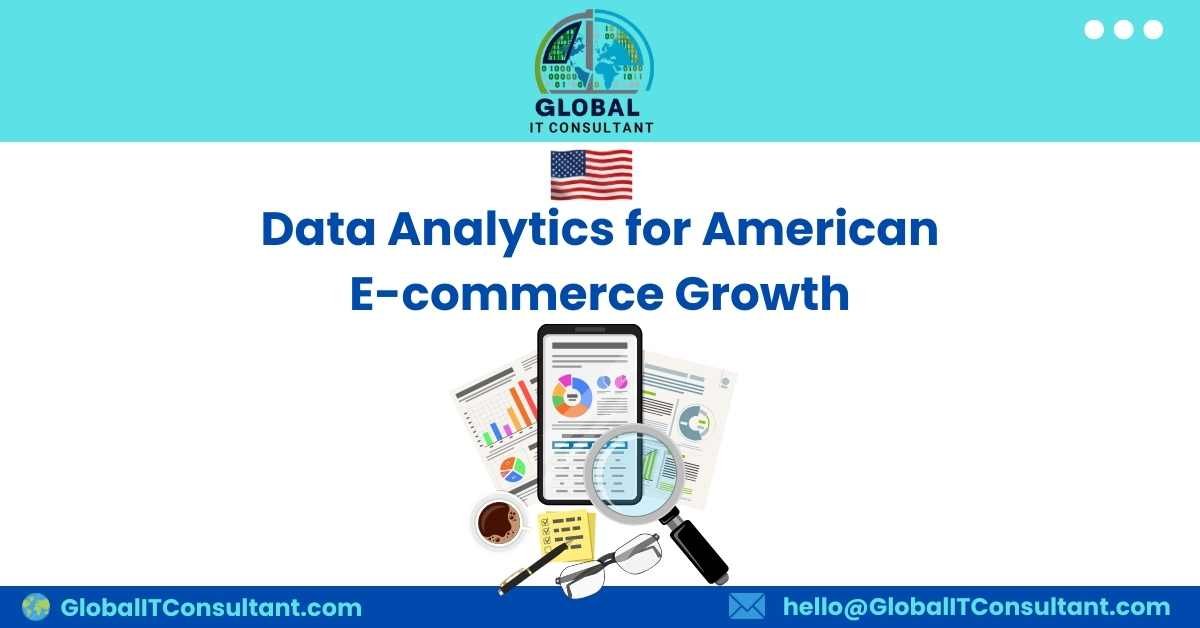By Sameer C, Co-Founder, Global Geographic Inc.
Over the past decade, e-commerce has become one of the fastest-growing sectors of the U.S. economy. With online sales surpassing $1 trillion in 2024 (according to recent U.S. Department of Commerce data), it’s clear that digital retail is no longer just an alternative to traditional shopping — it’s the primary channel for many American consumers.
But growth in e-commerce doesn’t come without challenges. Rising competition, increasing customer expectations, supply chain disruptions, and rapidly changing technologies mean that businesses need a smarter way to make decisions. This is where data analytics comes into play.
With over 15 years of experience helping organizations translate complex requirements into actionable solutions, I’ve seen how data analytics can transform businesses. In e-commerce, analytics is not just about tracking clicks and conversions — it’s about creating personalized experiences, optimizing operations, and building resilience in a highly competitive marketplace.
Let’s explore how data analytics is fueling American e-commerce growth and what businesses can do to leverage its full potential.
📊 1. Understanding Consumer Behavior
At the heart of e-commerce success is understanding customers — who they are, what they want, and how they make purchasing decisions. Data analytics provides a clear window into consumer behavior by analyzing:
- Browsing patterns – What pages customers visit, how long they stay, and where they drop off.
- Purchase history – Products frequently bought together, average order values, and repeat purchase trends.
- Demographics and preferences – Age, location, interests, and shopping habits.
With this information, businesses can create personalized recommendations, optimize their website layout, and design targeted marketing campaigns that increase conversions. For example, Amazon’s recommendation engine, powered by advanced analytics, accounts for a significant share of its sales.
🚚 2. Optimizing Supply Chain and Inventory
One of the biggest challenges for U.S. e-commerce businesses is managing supply chains efficiently — especially with ongoing global disruptions. Data analytics helps companies:
- Forecast demand more accurately based on seasonality, promotions, and historical sales.
- Optimize warehouse management by predicting which products should be stocked in which locations.
- Improve last-mile delivery efficiency by analyzing traffic patterns, delivery times, and carrier performance.
This not only reduces operational costs but also ensures that customers get their orders on time — a key factor in customer satisfaction and loyalty.
🎯 3. Enhancing Marketing Effectiveness
Marketing in the digital age is no longer about broad campaigns — it’s about precision targeting. Analytics enables businesses to measure the impact of every dollar spent across channels like Google Ads, Facebook, TikTok, and email marketing.
With data analytics, companies can:
- Track customer acquisition costs and lifetime value.
- Test different ad creatives and optimize for conversions.
- Use predictive analytics to identify high-value customers and create lookalike audiences.
By making marketing data-driven, businesses ensure that resources are focused on strategies that actually drive growth.
💳 4. Improving Customer Experience
Customer experience is one of the strongest differentiators in e-commerce. Analytics tools like sentiment analysis, clickstream tracking, and feedback monitoring help businesses understand customer pain points and expectations.
Examples include:
- Identifying why customers abandon their carts.
- Monitoring customer service interactions to improve support quality.
- Using heatmaps to optimize website usability.
By acting on these insights, businesses can create a smoother shopping journey — from the first ad click to post-purchase support.
🔐 5. Strengthening Security and Compliance
As e-commerce grows, so do risks around fraud, cybersecurity, and compliance with data privacy laws like CCPA and GDPR (for international customers). Data analytics is critical in identifying unusual purchase behaviors, detecting fraudulent transactions, and ensuring compliance.
For instance, anomaly detection models can flag suspicious patterns, such as multiple high-value orders from the same IP address, before they turn into costly chargebacks.
📈 6. Driving Strategic Decision-Making
Beyond day-to-day operations, analytics also guides long-term strategy. By analyzing market trends, competitor performance, and emerging customer needs, businesses can identify opportunities for expansion.
For example:
- Should a retailer expand into a new product category?
- Which states or regions show untapped demand?
- What pricing strategies work best across different customer segments?
With advanced analytics, decisions are no longer based on guesswork — they’re grounded in evidence.
🧠 Real-World Example: Data-Driven E-commerce Growth
Consider a mid-sized U.S. fashion retailer. By implementing data analytics, they:
- Identified their highest-margin products and prioritized marketing around them.
- Used predictive analytics to forecast seasonal trends, ensuring the right stock levels.
- Improved their email campaigns through personalized product recommendations, boosting open and click-through rates.
Within 12 months, their revenue increased by 25%, customer retention improved significantly, and operational costs dropped due to better inventory management.
This example illustrates how even smaller businesses — not just industry giants — can harness analytics for growth.
✅ Final Thoughts
The American e-commerce market is more competitive than ever. To thrive, businesses must move beyond intuition and embrace data-driven decision-making. From understanding consumer behavior to optimizing supply chains, marketing, and compliance, analytics provides the tools to grow smarter and faster.
At Global Geographic Inc., our mission is to empower professionals with the data analytics skills needed to support industries like e-commerce. Through hands-on training in tools such as Excel, SQL, Python, Power BI, and Tableau, we prepare individuals to analyze complex datasets, generate actionable insights, and drive real business impact.
If you’re an e-commerce professional — or aspiring to enter the field — now is the perfect time to build your analytics expertise. With the right skills, you can help businesses navigate challenges, capitalize on opportunities, and unlock the next wave of e-commerce growth in the U.S.

